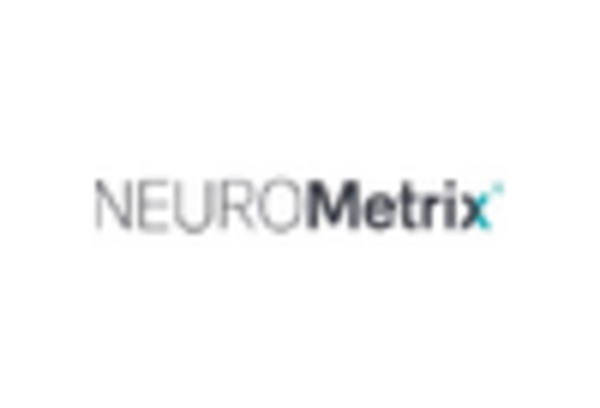Increasing Geriatric Population
The demographic shift towards an aging population in Germany is a significant driver for the peripheral nerve-stimulators market. As individuals age, they are more susceptible to various health issues, including chronic pain and neurological disorders. Current projections indicate that by 2030, approximately 25% of the German population will be over 65 years old. This demographic trend is likely to increase the demand for effective pain management solutions, including peripheral nerve stimulators. Healthcare systems are thus compelled to adapt to the needs of this growing population segment, potentially leading to an expansion of the market as more patients seek relief from chronic pain associated with aging.
Supportive Regulatory Environment
The regulatory landscape in Germany is becoming increasingly favorable for the peripheral nerve-stimulators market. Regulatory bodies are streamlining approval processes for innovative medical devices, which facilitates quicker market entry for new products. Additionally, reimbursement policies are evolving to cover advanced pain management technologies, making them more accessible to patients. This supportive environment encourages manufacturers to invest in the development of new peripheral nerve stimulators, thereby expanding the market. As a result, the availability of a wider range of products is anticipated, catering to diverse patient needs and preferences, which could further stimulate market growth.
Advancements in Medical Technology
Technological innovations in the field of medical devices are significantly influencing the peripheral nerve-stimulators market. The introduction of more sophisticated and user-friendly devices enhances the efficacy of treatments for various neurological conditions. For instance, the development of wireless and implantable stimulators has improved patient compliance and outcomes. In Germany, the medical technology sector is robust, with investments in research and development reaching approximately €5 billion annually. This focus on innovation is expected to drive the adoption of peripheral nerve stimulators, as healthcare professionals increasingly recognize their potential to provide effective pain relief and improve quality of life for patients.
Rising Prevalence of Neurological Disorders
The increasing incidence of neurological disorders in Germany is a primary driver for the peripheral nerve-stimulators market. Conditions such as neuropathic pain, multiple sclerosis, and Parkinson's disease are becoming more prevalent, affecting a significant portion of the population. According to recent health statistics, approximately 8 million individuals in Germany suffer from chronic pain, with a substantial number experiencing neuropathic pain. This growing patient base necessitates effective treatment options, thereby propelling the demand for peripheral nerve stimulators. As healthcare providers seek innovative solutions to manage these conditions, the peripheral nerve-stimulators market is likely to expand, offering advanced therapeutic alternatives that align with patient needs.
Growing Awareness of Pain Management Solutions
There is a notable increase in awareness regarding pain management solutions among both healthcare professionals and patients in Germany. Educational initiatives and campaigns aimed at informing the public about chronic pain and its treatment options have gained traction. This heightened awareness is likely to lead to a greater acceptance of peripheral nerve stimulators as viable treatment alternatives. As patients become more informed about their options, the demand for these devices is expected to rise. Furthermore, healthcare providers are increasingly incorporating peripheral nerve stimulators into their treatment protocols, recognizing their effectiveness in managing chronic pain conditions, thus positively impacting the market.

















Leave a Comment